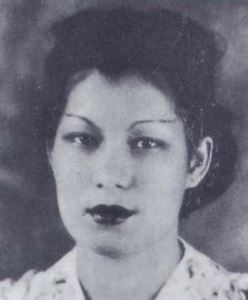Andrée Malebranche facts for kids
Quick facts for kids
Andrée Malebranche
|
|
|---|---|
 |
|
| Born | 28 November 1916 |
| Died | 13 February 2013 (aged 96) Port-au-Prince, Haiti
|
| Nationality | Haitian |
| Occupation | artist |
| Years active | 1941–1960 |
Andrée Malebranche (born November 28, 1916 – died February 13, 2013) was a talented painter and art teacher from Haiti. She was known for her unique art style. Her paintings are displayed in important places like the Musée d'Art Haïtien (Haitian Art Museum). The Haitian government even honored her for helping to grow Haitian painting.
Contents
Becoming an Artist
Andrée Malebranche was born on November 28, 1916, in Port-au-Prince, Haiti. Her family was well-off. Even though becoming an artist was not common for women at that time, Andrée loved painting from a young age.
When she was a child, the United States occupied Haiti. This made her want to celebrate her Haitian and African roots through art. She finished her early schooling at private schools. Then, she went to the École Normal (a school for teachers) and graduated in 1938.
Her father became Haiti's representative in Cuba. So, Andrée continued her art studies in Havana, Cuba. She studied at the Ciriulo da Bella Artes and earned her diploma in 1941.
A Career in Art
In 1941, Andrée Malebranche had her first art show in Port-au-Prince. The next year, she showed her work in Cuba. This was one of the first times a Haitian woman's art was shown outside of Haiti.
In 1944, she helped start the Centre d’Art d'Haïti (Art Center of Haiti). She taught painting and drawing there. In 1947, she had her first art show in the United States, in New York City.
Painting Murals
In 1945, Andrée Malebranche worked with other artists, Gérald Bloncourt and James Peterson. They were asked to create murals for a chapel in Pétion-Ville. These were some of the first murals ever painted in Haiti.
One of her murals was called Holy Family. In this painting, she showed the Holy Family as Haitian peasants. She painted a black Madonna, Joseph, and the Christ Child. Later, in 1960, a new priest ordered the painting to be destroyed. He felt it showed race and class in a way he didn't like.
Her Unique Style
Andrée Malebranche's art was different from many other Haitian artists. She often painted black and indigenous women from Cuba and Mexico. She showed their real lives and struggles. She did not paint colorful market scenes or voodoo images. Instead, she focused on the lives of poor peasants or women in the city.
Her paintings often used soft colors like grays and browns. The backgrounds were often dark, making the figures seem to blend into the shadows.
Gaining Recognition
Like many women artists of her time, Andrée Malebranche had to work hard to be recognized. It was often thought that women should stay at home. So, she found new places to show her art, like dress shops, instead of just art galleries.
She showed her art in many countries, including Brazil, France, Mexico, and the United States. Most of her paintings are now in private collections. However, some of her works are in the permanent collection of the Musée d'Art Haïtien.
In 2007, the Ministry of the Condition of Women of Haiti honored her. They gave her a plaque for her important work in Haitian painting. Two years later, the government recognized her again for her "honor and merit."
Legacy
Andrée Malebranche passed away on February 13, 2013, at her home in Port-au-Prince. Her funeral was held a week later. She is remembered as one of the first important women artists in Haiti. In 2016, she was honored at the Feminist Festival Nègès Mawon, along with other women artists.

